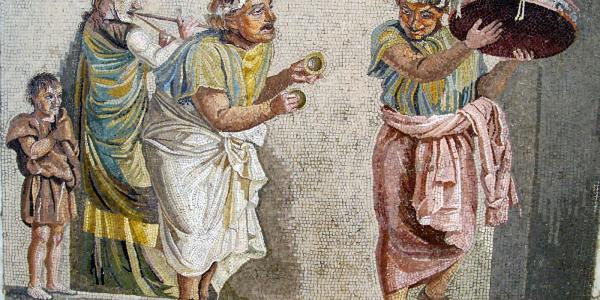Two new publications by Tim Moore, who researches ancient Greek and Roman theater and performance, have just appeared in print.
One, the article “Ancient Plays: Are They Musicals?”, was published in Greek and Roman Musical Studies 10 (2022) 306-326.
Article abstract: Almost all ancient plays have three things in common with most modern musicals. First, the basic structure of most ancient plays, like most musicals, involved alternation between song and speech. Second, the songs of ancient plays, like those of musicals, could have a wider cultural relevance, living on beyond their original performance context. Third, in most ancient plays, as in musicals, there is a strong sense that song and dance are as important as, or even more important than, what occurs in spoken dialogue in providing pleasure to the audience and conveying the meaning of plays. Scholarship of the last decade has made clearer the centrality of music to ancient theater and has taken important steps in understanding how that music worked.
The other article is titled "Roman Comedy and the Final Dance," and appears in the volume Aspects of Roman Dance Culture: Religious Cults, Theatrical Entertainments, Metaphorical Appropriations, ed. Karin Schlapbach (Potsdamer Altertumswissenschaftliche Beiträge 80; Franz Steiner Verlag, 2022) 159-178.
Article abstract: Dance pervaded Roman theater, and in Plautus’ Persa, Pseudolus, and Stichus characters refer explicitly to their own dancing very near the end of the play. Of the remaining twenty-three extant plays of Plautus and Terence, twenty include scenes of lively motion performed in accompanied meters either in their final scenes or just before, or at the moment of the play’s climactic crisis or its resolution. These scenes of lively motion near the ends of plays often share metrical features with the scenes of explicit dance, and some plays may include metatheatrical allusions to a final dance. It therefore seems very likely that Roman comic playwrights almost always made a point of including an exuberant dance at a significant moment at or near the ends of their plays.





